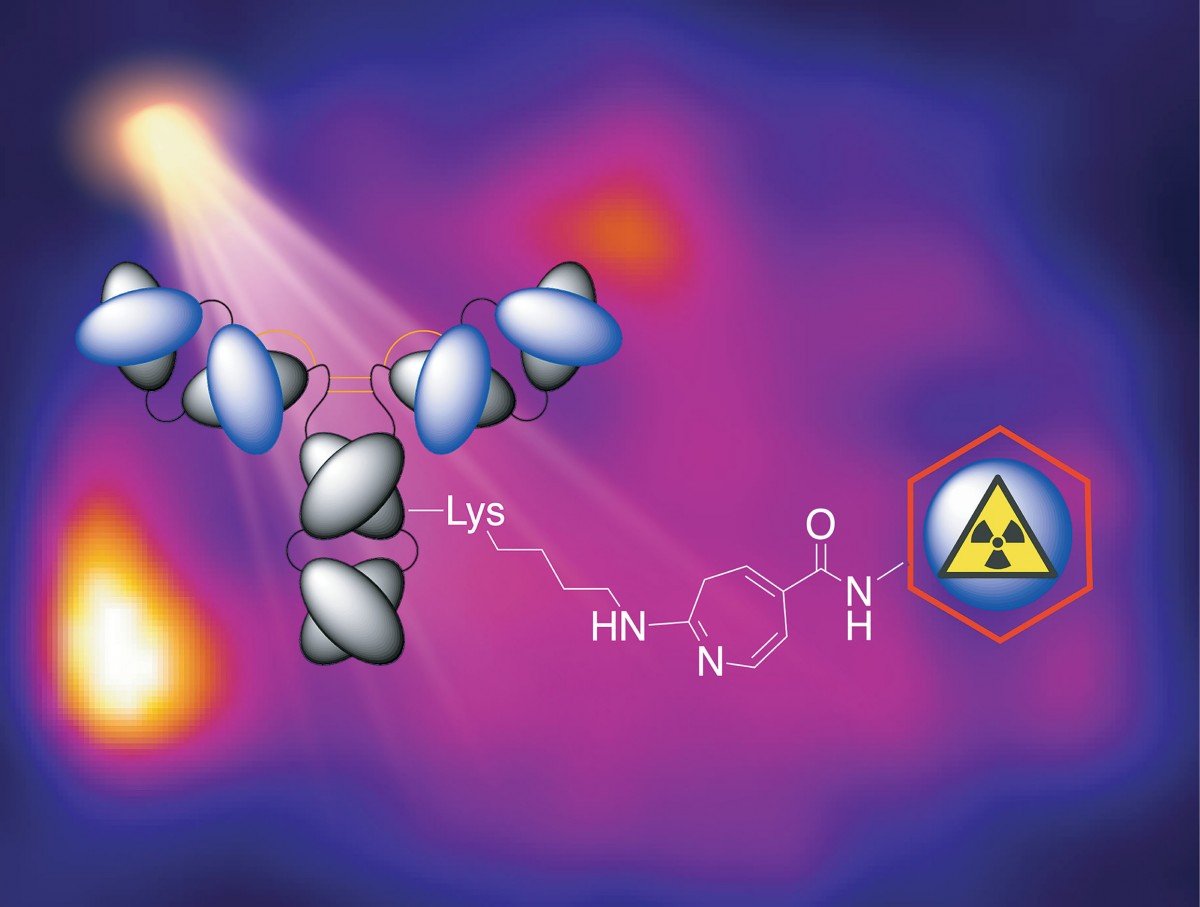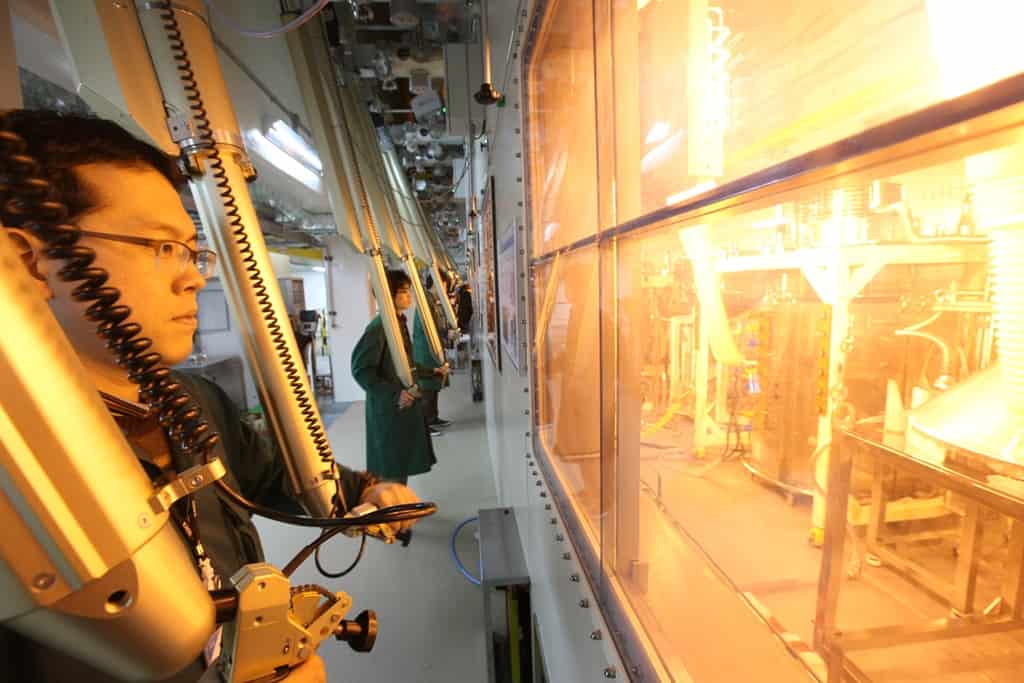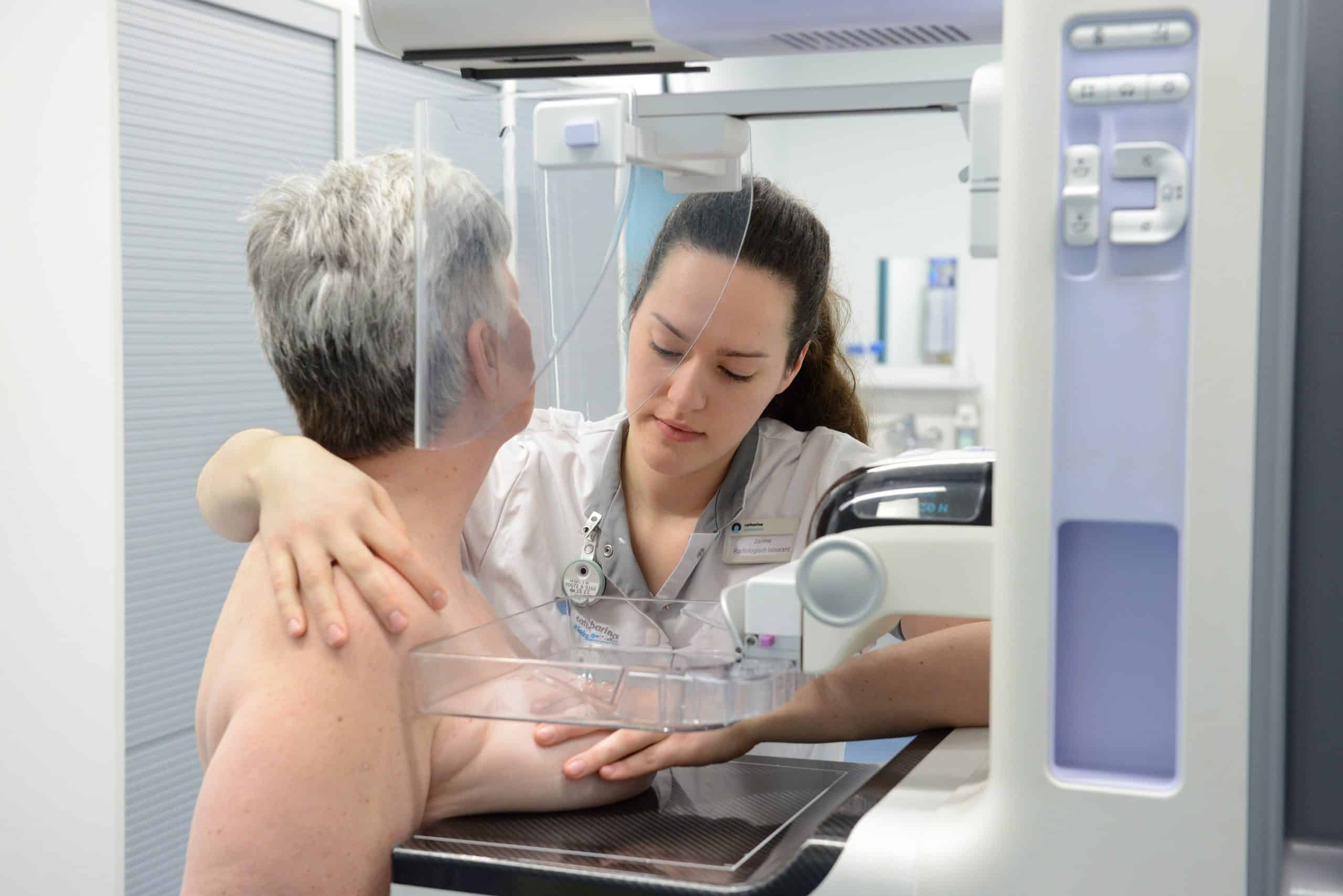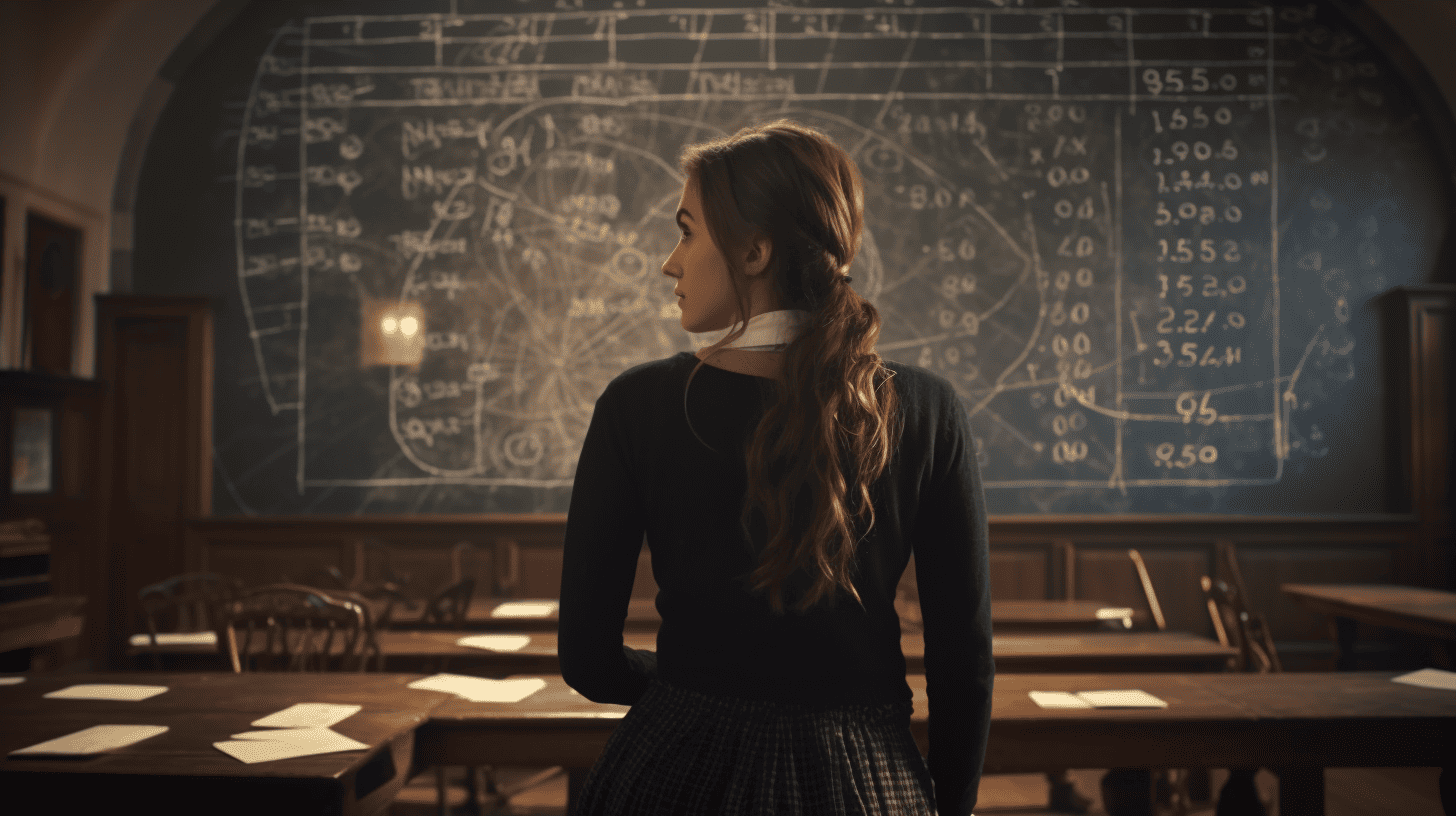
More than 1.7 million women worldwide contract breast cancer every year, and about half a million occurrences are fatal. While there has been increasing progress in the field of therapy in recent years, there has also been progress in the field of diagnostics. The latest development now comes from Switzerland, where researchers at the University of Zurich (UZH) have found a way to label breast cancer antibodies simply and quickly.
In nuclear medicine, radioactive antibodies are used for positron emission tomography (PET). This examination makes biochemical and physiological functions in the organism visible, improves cancer diagnosis and helps to monitor chemotherapy. In addition, radioactively labelled antibodies are also being developed for cancer treatment.
These so-called radiopharmaceuticals (=radioactive substances such as gallium, copper, zirconium) are docked to a drug (e.g. trastuzumab, an antibody for the treatment of breast cancer patients) or to an antigen produced by cancer cells, such as the HER2 antigen. The radiopharmaceuticals are injected intravenously into the body of the test person for diagnostic purposes (i.e. to determine where in the body the antigens, to which the antibodies attach, are located) or for therapy. Once they have specifically detected the tumor cells in the body, they irradiate them directly at their destination without unnecessarily damaging the surrounding healthy tissue.
The combination of photochemistry and radiochemistry enables us to radioactively label proteins much faster and easier – literally in the twinkling of an eye.
Until now, the procedures for radio-labelling proteins have been very time-consuming and difficult to automate, as the protein has to be purified in a multi-stage process, coupled to a metal-binding chemical substance, isolated, stored and then radio-labeled. The team of Jason P. Holland, Professor at the UZH Institute of Chemistry, has now developed a novel method for producing radioactive diagnostics and drugs using UV light. “The combination of photochemistry and radiochemistry enables us to radioactively label proteins much more quickly and easily – literally in the twinkling of an eye”, says Holland.
The researchers produced a series of novel chemical compounds that can bind radioactive metal ions such as gallium, copper and zirconium. In addition, the molecules have a special chemical group that is activated by irradiation with UV light. “The UV light causes the small metal complex to react extremely quickly and efficiently with certain amino acids found in antibodies and other proteins”, emphasizes Holland. As a result, the scientists were able to speed up the process of attaching antibodies to radioactive substances such as gallium or zirconium, thereby accelerating the production of radiopharmaceuticals using UV radiation.

Radiolabelling in Less than 20 Minutes
The problem with radio marking of proteins for PET imaging is time. The low-level radioactive substances to be injected into the body must have a very short half-life so that their radiation does not damage or even kill healthy cells – such as gallium, which is frequently used in nuclear medicine and decays very quickly. This requires a short period of time to produce such radioactively labelled substances, which is extremely difficult and requires enormous logistics.
The UZH team has succeeded in marking trastuzumab with radioactive gallium in less than 20 minutes, using a groundbreaking process in which antibodies, chelates and metal ions are mixed together and irradiated with light. This method has also been successful with the drug preparation that is injected into the patient without first purifying the antibody, the researchers emphasize. “The efficient process greatly simplifies the production of radioactively labelled proteins. It is not necessary to isolate and characterize the intermediate before the radioactive metal ion is attached – a huge advantage”, said Holland.
The team then developed the method further so that the radio marking was also possible with the slower decomposing zirconium. This enabled them to synthesize the radioactively labelled breast cancer antibody in less than 15 minutes in high yield and purity. A test with mice also showed that the antibody works just as well for PET imaging as conventionally produced antibodies.
Patent Pending
“Automated photo radiochemical synthesis has the potential to revolutionize the way radioactively labelled antibodies and other proteins are used in science and medicine”, says Jason P. Holland. He has already applied for a patent for the new method and intends to further develop the technology commercially. In the future, the method will be further developed so that it can also be used for the treatment of other types of cancer.
Also interesting:
Diagnosing Breast Cancer with a Blood Test: How it (Doesn’t) Work
Stress Hormones promote Metastasis of Breast Cancer
Diagnosing Breast Cancer with a Blood Test







